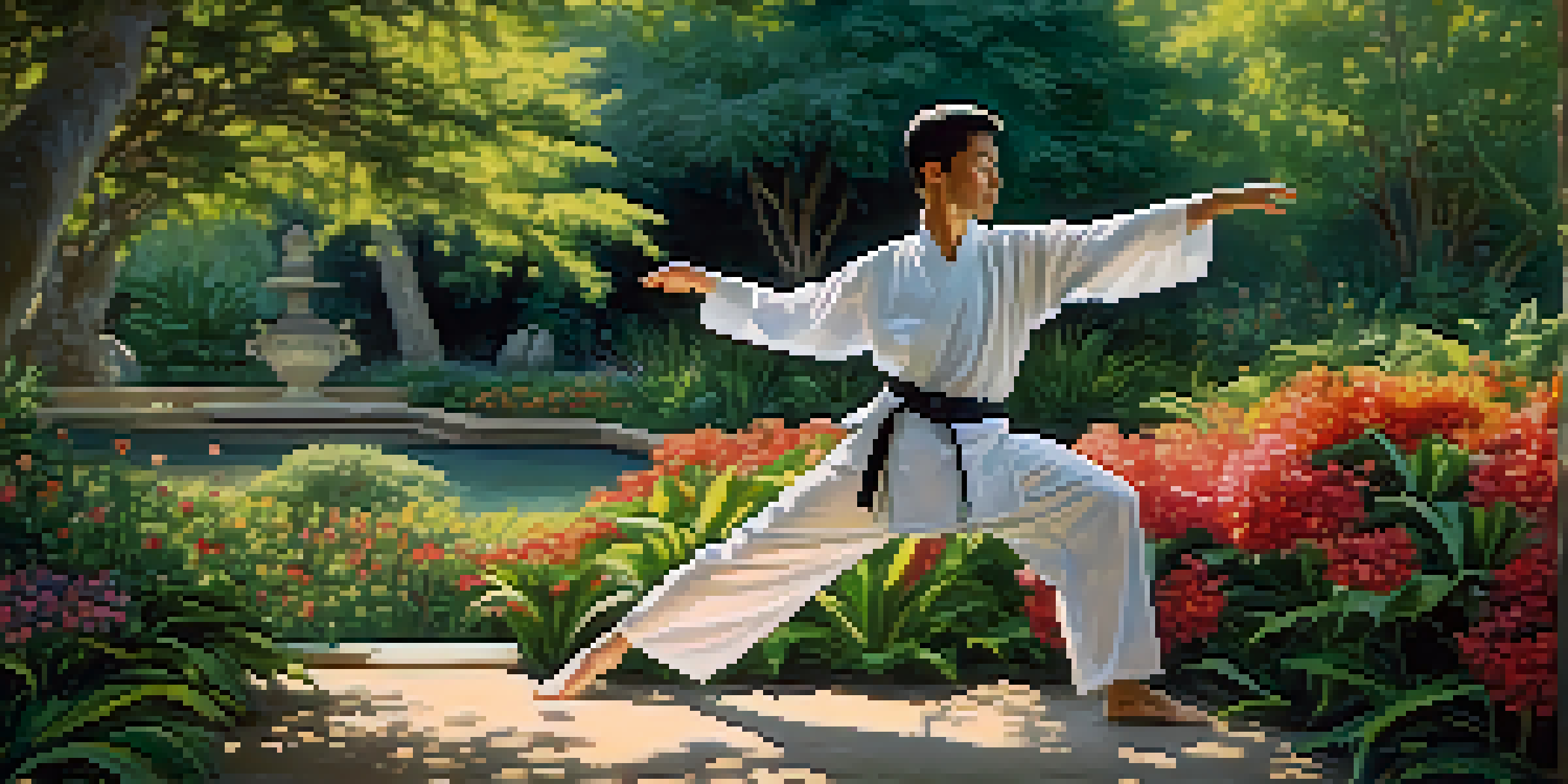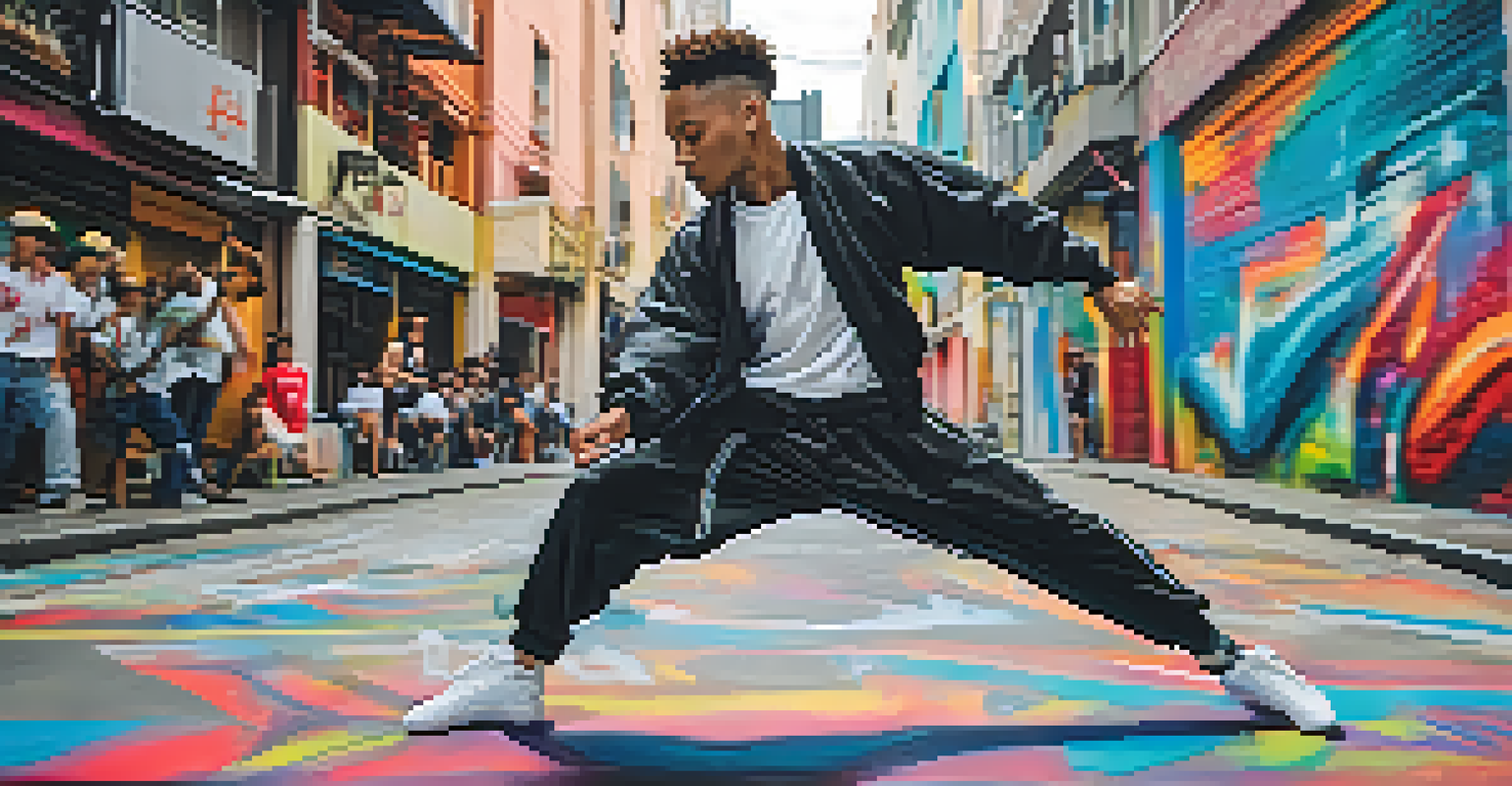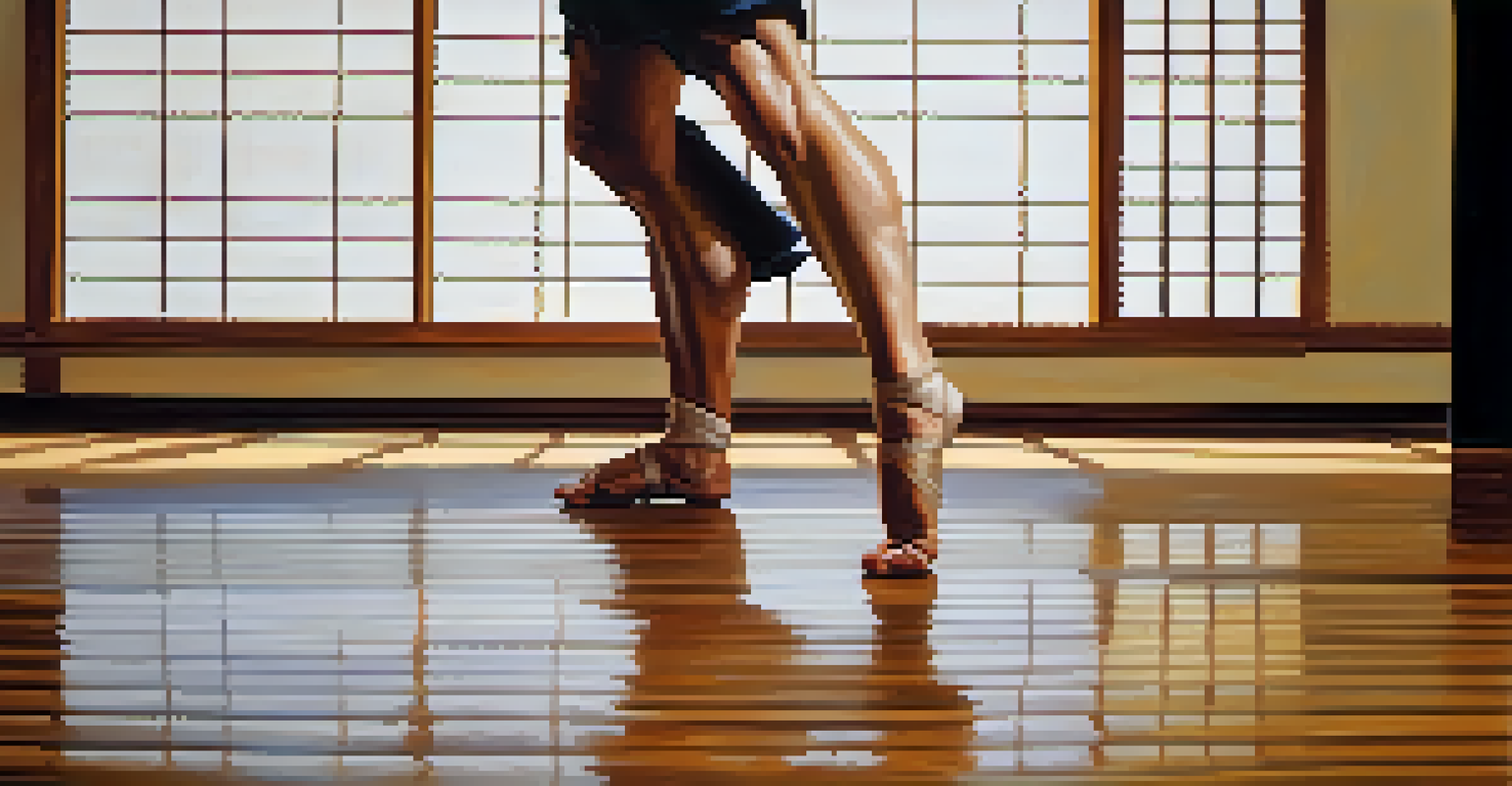Exploring the Influence of Asian Martial Arts on Dance Styles

Understanding Martial Arts and Dance: A Shared Language
At first glance, martial arts and dance might seem worlds apart, but they share a rich tapestry of movement and expression. Both art forms emphasize body control, rhythm, and the ability to convey emotions through physicality. This shared foundation allows practitioners of martial arts like Kung Fu or Taekwondo to seamlessly transition into dance styles, enriching their performances.
Martial arts is not about fighting; it's about building character.
Consider how a martial artist's focus on precision can translate into a dancer's technique. The sharp, deliberate movements that characterize many martial arts can enhance a dancer's ability to execute complex choreography with grace. Just as martial arts embody discipline and dedication, dance also requires a commitment to mastering one's body and movement, forging a natural connection between the two.
Moreover, the storytelling aspect of both disciplines cannot be overlooked. Martial arts often tell stories of valor and discipline, while dance can express emotions and narratives through movement. This intersection creates a captivating dialogue between martial arts and dance, inviting audiences to engage with the narratives presented in both forms.
Cultural Roots: The Origins of Asian Martial Arts
Asian martial arts have deep historical roots that date back centuries, with each style reflecting the culture and philosophy of its origin. For instance, Chinese martial arts, or Wushu, are not just about combat; they encompass spiritual and philosophical elements that influence how practitioners move. These elements can directly impact dance styles, leading to a more profound expression of movement.

Take, for example, the traditional Japanese art of Aikido, which emphasizes harmony and fluidity in motion. This principle can be seen mirrored in contemporary dance forms that prioritize flow and connection. Understanding the cultural context of these martial arts enriches a dancer's performance, as it allows for a more authentic representation of the movements.
Martial Arts and Dance: A Connection
Both martial arts and dance share a foundation of movement, precision, and emotional expression, allowing practitioners to enhance their performances through cross-training.
Furthermore, the connection to nature found in many Asian martial arts, such as Tai Chi, encourages a sense of groundedness that dancers can embody. This relationship with the earth enhances the overall aesthetic of dance, creating a captivating visual experience that resonates with audiences.
Exploring Asian Martial Arts Techniques in Dance
One of the most fascinating aspects of the influence of Asian martial arts on dance is the incorporation of specific techniques. For instance, the dynamic kicks of Taekwondo can be adapted into dance routines, adding an element of surprise and excitement. Dancers who study these martial arts often find themselves able to execute movements with a level of energy and sharpness that captivates audiences.
Dance is the hidden language of the soul.
Additionally, the use of stances and postures common in martial arts can inform a dancer's alignment and presence. The strong, rooted stances in martial arts offer a foundation for powerful dance movements, allowing for a more grounded performance. This integration not only enhances the technical aspects of dance but also enriches the emotional delivery.
Moreover, the concept of 'flow' in martial arts, where movements transition smoothly into one another, can greatly influence a dancer's ability to connect sequences. This seamlessness is vital in dance, particularly in styles that rely on continuous movement, such as contemporary or hip-hop.
Fusion Styles: Where Martial Arts Meets Dance
In recent years, we've seen the emergence of fusion styles that blend martial arts and dance, creating innovative forms that challenge traditional boundaries. Styles like Capoeira, which combines elements of dance, acrobatics, and martial arts, showcase how these disciplines can coexist beautifully. This fusion invites creativity and experimentation, allowing artists to express themselves in new and exciting ways.
Additionally, dance forms like breakdancing incorporate martial arts-inspired moves, showcasing impressive agility and strength. The dynamic spins and kicks in breakdancing draw directly from martial arts techniques, creating a thrilling visual experience. This cross-pollination illustrates how both disciplines can inspire and elevate one another.
Cultural Roots Enhance Performance
The historical and philosophical elements of Asian martial arts inform dance styles, leading to more authentic and profound expressions of movement.
Furthermore, these fusion styles often celebrate cultural diversity and encourage collaboration among artists from different backgrounds. This collaborative spirit fosters a creative environment where martial artists and dancers can share their knowledge, enhancing both art forms and broadening their appeal.
The Role of Meditation and Mindfulness
A significant aspect of many Asian martial arts is the practice of meditation and mindfulness. These elements play a crucial role in cultivating focus and mental clarity, which can greatly benefit dancers. By incorporating mindfulness techniques into their training, dancers can enhance their ability to connect with their bodies and movements, leading to more expressive performances.
For instance, the practice of Zen in martial arts encourages practitioners to be present in each moment, a philosophy that dancers can adopt. This presence allows dancers to fully immerse themselves in their routines, resulting in performances that resonate on an emotional level with audiences. The meditative aspects of martial arts can help dancers manage performance anxiety, fostering a sense of calm and confidence.
Moreover, the breathing techniques learned in martial arts can enhance a dancer's stamina and control. Proper breathwork supports physical exertion, allowing for longer and more dynamic performances. This holistic approach to training not only improves technical skills but also nurtures the dancer’s mental and emotional well-being.
Impact on Global Dance Communities
The influence of Asian martial arts on dance extends far beyond individual performances; it affects global dance communities as well. As dancers and choreographers explore these connections, they contribute to a more diverse and inclusive dance landscape. This cross-cultural exchange fosters creativity and encourages artists to push the boundaries of what dance can be.
Moreover, workshops and classes that incorporate martial arts elements into dance training are becoming increasingly popular. These offerings provide dancers with the opportunity to learn new techniques and styles, enriching their overall practice. This blending not only enhances individual skill sets but also builds a sense of community among diverse practitioners.
Fusion Styles Expand Artistic Boundaries
Emerging fusion styles that blend martial arts and dance encourage creativity and collaboration, resulting in innovative performances that challenge traditional norms.
Additionally, as dance competitions and festivals celebrate a variety of styles, the integration of martial arts influences can lead to innovative performances that captivate audiences. This growing trend showcases the evolving nature of dance, encouraging artists to draw inspiration from various disciplines and cultural backgrounds.
The Future of Dance and Martial Arts Integration
Looking ahead, the integration of Asian martial arts and dance is likely to continue evolving. As artists explore new ways to blend these forms, we can expect to see even more innovative styles and performances. The ongoing dialogue between martial arts and dance will undoubtedly inspire future generations of performers to think outside the box.
Moreover, as the global interest in both martial arts and dance continues to rise, we may witness a surge in collaborative projects that highlight their unique synergies. This could lead to the creation of new genres that celebrate both traditions while appealing to a wider audience. The potential for growth and exploration within this intersection is vast and exciting.

Ultimately, the relationship between Asian martial arts and dance is a testament to the power of movement as a universal language. As artists continue to draw from these rich traditions, they will undoubtedly create work that resonates deeply with audiences, bridging cultural divides and fostering understanding through the art of movement.